The Constitution of the United States Of America
What is the U.S Constitution?
The Constitution of the United States of America is the primary legislation of the Country. It is the Supreme law on which every other law draw their validity or legitimacy. It establishes the framework for America’s federalism and democracy, a framework for the balance between centralized and decentralized government, separation of powers and protection of individual liberty.
When was the Constitution Founded?
The Articles of Confederation were written in 1777, following the declaration of Independence, and ratified on March 1, 1781.
History of the Constitution
On July 4, 1776, 13 colonies under British rule adopted the Declaration of Independence, separating from Great Britain to form a new Country, The United States of America. Each colony would be an independent state and the people would have basic freedom to life, liberty, and the pursuit of happiness. However, the Articles failed to successfully create a central government that was powerful enough to thrive.
In an effort to reform the failing government established by the Articles of Confederation, the US Constitution was signed on September 17, 1787, created at the Philadelphia Convention, also known as the Constitutional Convention and was ratified in 1789. After numerous debates, the Farmers of the Constitution drafted the Constitution to replace the Articles. The main goal of the Constitution was to establish a central government that was powerful enough to sustain itself and act on national issues but flexible enough not to sustain the liberties granted to the People under the Articles.
The Constitution created the three branches of government with clearly separated powers, functions, roles, and responsibilities, to ensure a balance of power in government by preventing the concentration of power in one branch. It also created a system of checks and balances to further prevent one branch from gaining superiority over the other.
How Many Amendments does the U.S Constitution Have?
Since coming into force, the Constitution of the US has been amended 27 times to reflect the changing society in which it operates. The 1st to 10th amendments constitute the Bill of Rights which generally guarantees the civil rights and liberties of each person. Under the 10th Amendment, the people of state retains powers not delegated to the Federal Government. Amendment 11 to 27 deals with a range of issues, right and limitations including matters relating to government administration, rights to vote, as follows
- Amendments 11 through 27 cover a range of rights as well as limitations
- Amendment 11 deals with judicial limits.
- Amendment 12 revises the process for electing the President and Vice President.
- Amendment 13 abolishes slavery.
- Amendment 14 citizenship, privilege, immunity, Due Process
- Amendment 15 prevents exclusion from voting on account of race.
- Amendment 16 empowers Congress to collect income taxes.
- Amendment 17 establishes the election of Senators by popular vote.
- Amendment 18 prohibited the manufacture and sale of intoxicating liquors.
- Amendment 19 prevents the denial of a person’s right to vote on account of sex.
- Amendment 20 sets the beginning and ending date of congressional and executive terms of office
- Amendment 21 repeals the eighteenth amendment which imposed the prohibition.
- Amendment 22 limits how many terms a President could serve.
- Amendment 23 grants residents of the District of Columbia presidential voting rights
- Amendment 24 states that the right to vote shall not be denied by reason of failure to pay any poll tax or other tax
- Amendment 25 establishes the presidential line of succession.
- Amendment 26 Voting age lowered from 21 to 18 years, established the right of an individual to vote from the age of 18.
- Amendment 27 limits increase congressional compensation. The amendment was proposed in 1789 but was not ratified until 1992.
What is the Purpose of the US Constitution?
The US constitution, nicknamed bundle of compromises, is the foundation on which the People of the United States claim their rights as citizens and the Government has its legitimacy to exist and function. The Preamble of the Constitution underlines the purpose of the Constitution and the aims of the forefathers for the new era. Although the Constitution was written in the 18th century, its main objectives are brief, clear and adaptable. The Preamble reads
"We the People of the United States, in order to form a more perfect Union, establish Justice, insure domestic Tranquility, provide for the common defense, promote the general Welfare, and secure the Blessings of Liberty to ourselves and our Posterity, do ordain and establish this Constitution for the United States of America."
The Constitution was written for many reasons including
-
To establish a new system of government. It creates the blueprint for the federal system of government. The Government of the US is divided into 3 branches, each vested with specific powers. Although the synthesis between them is more complex, in simple terms, the Legislative branch makes the laws, its powers rests on the 2 Houses of Congress. The Executive implements the laws, the powers of the executive branch is vested in the President. The Judicial branch interprets the laws, the Supreme court holds the power for the judicial branch consisting of itself, the only Supreme Court, and several federal courts. Although each branch is independent of the other, the Constitution creates a system of checks and balances such that no branch wields the highest power. Each branch also relies on the other to validate or completely exercise the powers bestowed on it by the constitution. For instance, the Justice of the Supreme Court is appointed by the President, subject to the approval of Congress. The Judiciary can declare a law made by Congress or an action of the executive, unconstitutional.
-
To limit the power the government had over the people and prevent tyranny. The Constitution sets the parameters on which the people agree to be governed. The contribution and consent of the people to be governed in the manner established in the Constitution are one of the most significant differences between the era before the Constitution when the people were led by a supreme monarch and the era of the Constitution, establishing government elected by the people and answerable to the people.
-
To separate the power between the Federal and the State government. The Constitution retains powers not granted to the federal government and not withheld from the states, to the states and the people. The constitution also empowers Congress to admit new states. The Union of the initial 13 states has since expanded to 50 states and the District of Columbia.
-
In establishing the new system of government, the constitution creates sovereign states with Constitutions, mirroring the federal government in their structure and system of government and only subject to the Constitution itself as the supreme legislation, where there is a conflict between the laws of the State and the US Constitution. The state and the Federal government have powers that are exclusive, meaning issues on which only either the state or the federal government can legislate, and concurrent powers that describe matters on which both the states and the federal government has the power to legislate. The Constitution creates a balance of power between the states and the federal government rather than clearly limiting the powers of the federal government as it was under the failed Articles of Confederation. The Constitution’s full faith and credit clause wades in on the relationships between states, requiring every state to honor the public acts and judicial decisions of other states and prevents any state from discriminating against persons from other states, under the privileges and immunity clause.
-
Guarantee individual and group liberty. Initially, the individual rights listed in the Constitution were sparse, to avoid missing any particular right and by so doing, excluding the right of persons. However, in response to concerns on the lack of expressed by state legislators, Congress passed amendments to the Constitution which were considered restrictions on the powers of the Federal government but are now collectively described a Bill of Rights once the Supreme Court declared them enforceable against the State. The Bill of rights includes
- The First Amendment prohibits Congress from favoring a specific religion or prohibiting freedom of people to practice any religion, and protects the freedom of speech, of the press and the right to gather, in a peaceful assembly. It also guarantees the right to petition the government
- The Second Amendment guarantees the right to bear arms, for the purpose of maintaining a well-regulated militia.
- The Third Amendment protects the rights of citizens as owners of their residence and limits the power of the Federal government to permit soldiers to take over or take shelter in a civilian’s home o except during wartimes and in a manner that complies with the laws.
- The Fourth Amendment prohibits unreasonable searches and seizures and requires the issuance of a search warrant only on probable cause, supported by oath or affirmation.
- The Fifth Amendment creates rights that are relevant to court proceedings. It guarantees the right to an indictment by a grand jury before a person may be tried for a serious crime. It prevents double jeopardy- trying a person for the same crime twice and protects the right against self-incrimination so that a person can not be forced to provide information that may be used against them in a criminal trial. It requires due process of law in matters or proceedings that may result in the deprivation of the right of a person to life, liberty or property. It limits the power of the government to take private property for public use and requires the person whose property is taken to be justly compensated.
- The Sixth Amendment protects the rights of a person accused of a crime. The right to have their criminal case heard by an impartial jury selected from the surrounding community where the crime was committed, the right to be informed of the charges against them, a speedy and public trial (to prevent secret proceedings that may lead to intimidation and abuse), the right to legal representation by an attorney. If the defendant cannot afford an attorney to defend them, the government is required to provide one. It also provides for the right of the defendant to be confronted by witnesses with evidence against them. In interpreting this right, upheld the defendant’s right to cross-examine a witness and compel them to tell the truth.
- The Seventh Amendment preserves the right to jury trial in certain federal civil cases and prohibits the court from reexamining the jury’s finding of fact.
- The Eighth Amendment prohibits excessive bail. Bail is usually returned to a defendant if they appear at trial and withheld if they do not. Bail is granted on condition that the defendant will not flee. The amendment also prohibits excessive fines-the Supreme court in interpreting excessive fines states that a fine would only be excessive if it violated the due process clause. The 8th Amendment also prohibits inflicting cruel and unusual punishments on a person, including punishments that are more grievous than the crime.
- The Ninth Amendment broadens the rights to persons granted by the constitution stating that a person’s rights are not limited to only those enumerated and the Constitution shall not be interpreted to deny other rights not protected or listed.
- The Tenth Amendment reserves all powers not delegated to the federal government by the Constitution or prohibited to the states to the states and the people.
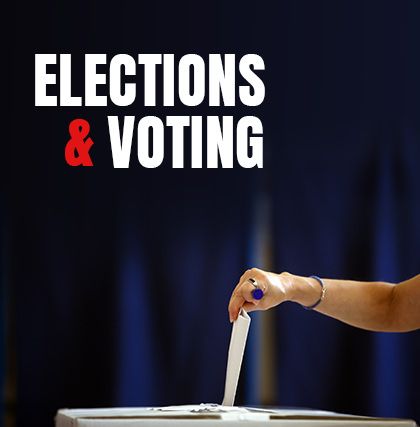 Elections and Voting
Elections and Voting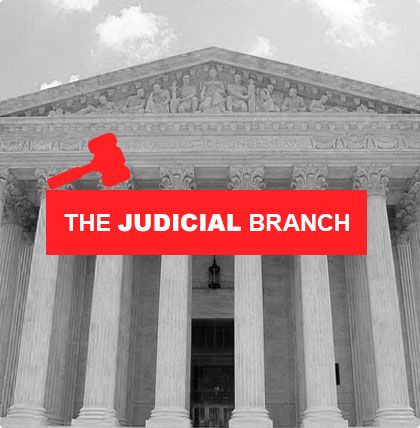 The Judicial Branch
The Judicial Branch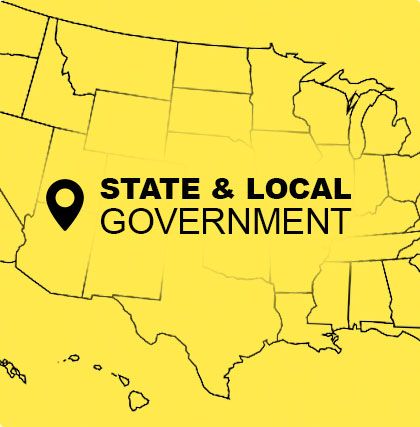 State & Local Government
State & Local Government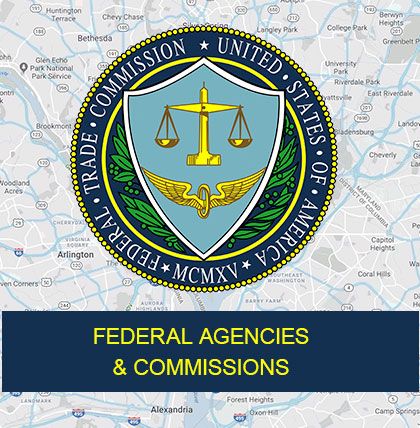 Federal Agencies & Commissions
Federal Agencies & Commissions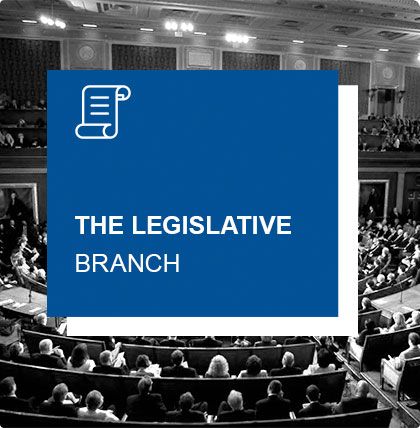 The Legislative Branch
The Legislative Branch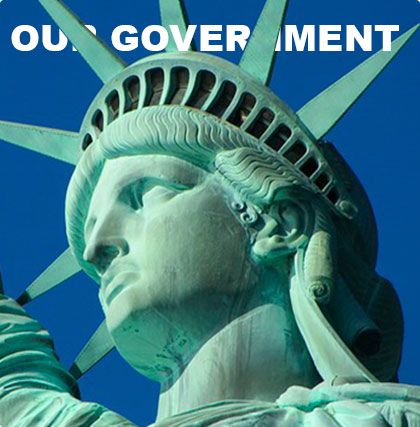 Our Government
Our Government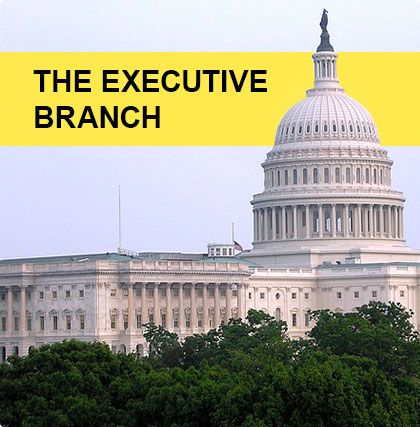 The Executive Branch
The Executive Branch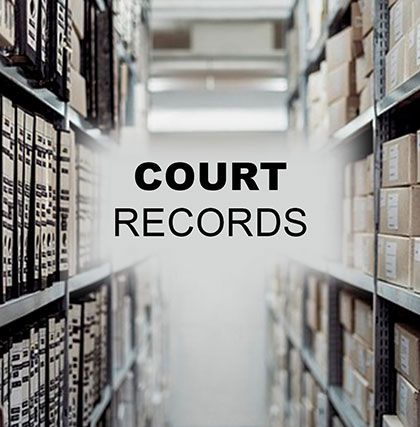 Court Records
Court Records